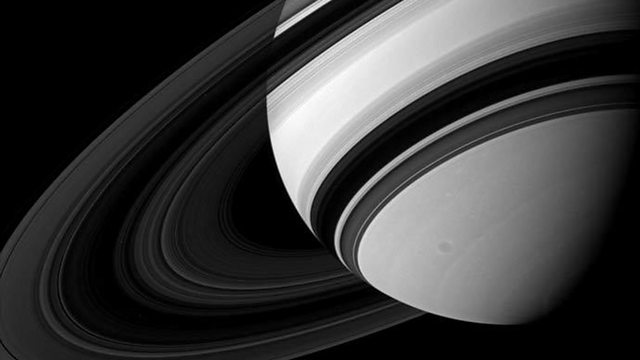Cassini's Last Adventure
The Cassini spacecraft will soon plunge to its death in Saturnâs toxic clouds.
After twenty years in space, NASAâs Cassini-Huygens mission is coming to an end. But it will go out with one big bang. Launched in 1997 on a billion-mile trek to Saturn, Cassini has transformed our knowledge of the planet, its rings and more than sixty moons. The spacecraft has discovered plumes of water on the moon Enceladus and the European Huygens lander has snapped images of Titanâs surface, revealing riverbeds, lakes and mountains carved by liquid methane. Both moons are possible candidates for life, maybe better candidates than Mars.
Cassiniâs fuel light is flashing red and so to protect the moons from accidental contamination, a dramatic âgrand finaleâ has been planned. On 15 September 2017, Cassini will dive into the toxic clouds of Saturn, burning up to become a part of the gas giant itself. The data the spacecraft collects, as it descends to its death, will give new insights into Saturnâs atmosphere and many scientists are even looking forward to its demise.
In Cassiniâs Last Adventure, space scientist Professor Lucie Green celebrates the spacecraftâs achievements and discovers how it has changed our views on where to find life elsewhere in the Universe.
Photo: One of the images of Saturn's rings, sent back by the Cassini spacecraft Credit: NASA/JPL
Last on
More episodes
Previous
Clip
-
![]()
Cassini: The dramatic finale to a 20-year space mission
Duration: 01:10
Broadcasts
- Tue 22 Aug 2017 12:32GMT±«Óătv World Service except News Internet
- Tue 22 Aug 2017 21:06GMT±«Óătv World Service except News Internet
- Wed 23 Aug 2017 01:32GMT±«Óătv World Service except News Internet
- Mon 28 Aug 2017 05:06GMT±«Óătv World Service Americas and the Caribbean & South Asia only
- Mon 28 Aug 2017 06:06GMT±«Óătv World Service East Asia



